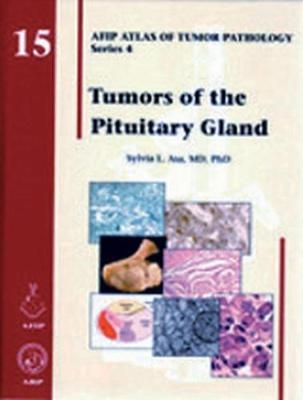
Tumors of the Pituitary Gland
Seiten
2011
American Registry of Pathology (Verlag)
978-1-933477-15-2 (ISBN)
American Registry of Pathology (Verlag)
978-1-933477-15-2 (ISBN)
The classification of pituitary disease is becoming easier, and as targeted therapies are being developed, the role of the pathologist in determining accurate diagnoses is increasingly important. The surgical pathologist must therefore recognise the important role of morphologic analysis in classifying sellar pathology for the diagnosis and management of the pituitary patient. Highly illustrated.
The pituitary gland is the “master gland” that regulates many of the functions of other endocrine glands and their target tissues throughout the body. There is virtually no organ or tissue that is not affected, directly or indirectly, by the hormones that are secreted by the anterior and posterior pituitary. Pituitary dysfunction is a common clinical scenario. However the manifestations of pituitary disease vary from florid clinical features that can readily be identified and recognised as pituitary in etiology, to more subtle and non-specific problems that are often overlooked or misdiagnosed, leaving the relationship to pituitary malfunction unnoticed.
The former, conditions such as florid acromegaly and Cushing’s disease, are only a minority of pituitary pathologies, hence the misconception that pituitary disease is rare. The most common disorder is the pituitary adenoma, a lesion that is increasingly recognised as a highly-prevalent finding identified in up to 20% of the population. Although many of these are considered to be incidental findings, many have unrecognised impact on fertility, longevity and quality of life, and their clinical significance is increasingly gaining attention. Moreover, the management of these lesions has seen major changes with the development of new pharmacotherapeutic agents, improved minimally invasive surgical approaches and targeted radiotherapeutic techniques.
There has been significant progress in understanding pituitary development, physiology and pathology, and these are all discussed in this new edition. The classification of pituitary disease is becoming easier, and as targeted therapies are being developed, the role of the pathologist in determining accurate diagnoses is increasingly important. The surgical pathologist must therefore recognise the important role of morphologic analysis in classifying sellar pathology for the diagnosis and management of the pituitary patient.
The pituitary gland is the “master gland” that regulates many of the functions of other endocrine glands and their target tissues throughout the body. There is virtually no organ or tissue that is not affected, directly or indirectly, by the hormones that are secreted by the anterior and posterior pituitary. Pituitary dysfunction is a common clinical scenario. However the manifestations of pituitary disease vary from florid clinical features that can readily be identified and recognised as pituitary in etiology, to more subtle and non-specific problems that are often overlooked or misdiagnosed, leaving the relationship to pituitary malfunction unnoticed.
The former, conditions such as florid acromegaly and Cushing’s disease, are only a minority of pituitary pathologies, hence the misconception that pituitary disease is rare. The most common disorder is the pituitary adenoma, a lesion that is increasingly recognised as a highly-prevalent finding identified in up to 20% of the population. Although many of these are considered to be incidental findings, many have unrecognised impact on fertility, longevity and quality of life, and their clinical significance is increasingly gaining attention. Moreover, the management of these lesions has seen major changes with the development of new pharmacotherapeutic agents, improved minimally invasive surgical approaches and targeted radiotherapeutic techniques.
There has been significant progress in understanding pituitary development, physiology and pathology, and these are all discussed in this new edition. The classification of pituitary disease is becoming easier, and as targeted therapies are being developed, the role of the pathologist in determining accurate diagnoses is increasingly important. The surgical pathologist must therefore recognise the important role of morphologic analysis in classifying sellar pathology for the diagnosis and management of the pituitary patient.
| Erscheint lt. Verlag | 30.9.2011 |
|---|---|
| Reihe/Serie | AFIP Atlas of Tumor Pathology, Series 4, ; No. 15 |
| Zusatzinfo | Colour illustrations |
| Verlagsort | Washington |
| Sprache | englisch |
| Maße | 218 x 279 mm |
| Gewicht | 1178 g |
| Themenwelt | Medizinische Fachgebiete ► Innere Medizin ► Endokrinologie |
| Medizin / Pharmazie ► Medizinische Fachgebiete ► Neurologie | |
| Medizin / Pharmazie ► Medizinische Fachgebiete ► Onkologie | |
| Studium ► 1. Studienabschnitt (Vorklinik) ► Physiologie | |
| Studium ► 2. Studienabschnitt (Klinik) ► Pathologie | |
| ISBN-10 | 1-933477-15-6 / 1933477156 |
| ISBN-13 | 978-1-933477-15-2 / 9781933477152 |
| Zustand | Neuware |
| Haben Sie eine Frage zum Produkt? |
Mehr entdecken
aus dem Bereich
aus dem Bereich
Buch | Hardcover (2012)
Westermann Schulbuchverlag
34,95 €
Schulbuch Klassen 7/8 (G9)
Buch | Hardcover (2015)
Klett (Verlag)
30,50 €
Buch | Softcover (2004)
Cornelsen Verlag
25,25 €



